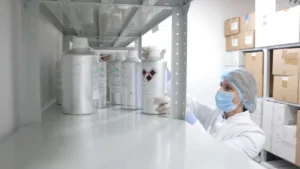Healing plants, ancient recipes, and natural medicine underpin Ayurveda. Today, Ayurvedic manufacturing requires quality control since people demand safe, pure, and true products. Today, true Ayurvedic goods must be backed by research, tested for ingredients, and follow all the standards. If done correctly, the drug will follow Ayurvedic rules and be safe by today’s standards.
How is the sourcing of ingredients controlled?
Fresh greens are the greatest way to begin an Ayurvedic treatment.
Authentic source includes things like:
- Finding herbs from the right plant species;
- Checking for heavy metals and pesticide residues;
- Coming from farming zones that are clean and not polluted
If you expedite the sourcing process, you can get contaminated products that are less potent and have mixed medicinal benefits. Ayurvedic products manufacturers in India only utilise herbs that are approved by the pharmacopoeia and throw away any raw materials that aren’t good enough before they make the products.
Why is it important to use classical references?
Authentic formulas follow classical rules and don’t mix herbs. Ayurvedic products manufacturers in India use established composition ratios, processing processes, and ingredient proportions. Ancient references mean the product matches the medicinal objective in the original literature, not just a herbal supplement.
What Part Do GMP and Lab Testing Play?
For modern Ayurvedic manufacturing to work, regulations need to be in line with old ideas.
Good Manufacturing Practices, or GMP, make sure that production is organised, can be tracked, and is always the same.
These days, quality checks include:
- Microbial testing
- Heavy metal profiling
- Identification of phytochemicals
- A study of stability and shelf life
This keeps the parts separate and ensures each batch is safe and functional. Ancient Ayurvedic formulae must be examined with modern procedures to ensure their efficacy and safety.
How do old-fashioned methods work with newer facilities?
Real Ayurveda doesn’t reject current technology; instead, it combines it with old ways of doing things.
For cleanliness and consistency, machines may wash, dry, and powder herbs. But steps like traditional decoction, slow boiling, fermentation, and ghee saturation still follow old rules for timing, temperature, and processing.
This mix guarantees: clean production; processing in a controlled setting; consistency in every batch; preservation of traditional identity
Precision is supported by modern tools, while healing value is protected by old-fashioned process logic.
What does batch documentation do to make things safer?
From getting the raw materials to the end packaging, every production batch is written down. Complete traceability is guaranteed by this paperwork.
The product manufacturer can discover the faulty batch, keep it from buyers, and mark it if a quality issue is found. Over time, trust, responsibility, and transparency grow.
In conclusion
Today, quality in Ayurveda is not a mistake; it is planned. Genuine companies use traditional recipes along with scientific testing, ethical sources, and GMP-based production. This balance takes into account old healing ideas while also making sure current safety. As people learn more about Ayurvedic manufacturing, the demand for pure, clean products that have been tested in labs keeps going up. And when the right standards are followed during production, medicine that works, can be trusted, and fits with both traditional and current health expectations is made.
FAQs
Are all herbal products automatically considered Ayurvedic?
Absolutely not. True Ayurveda requires recipes from old sources with known ingredient proportions and conventional preparation processes.
Does modern lab testing reduce authenticity?
Not at all. Testing backs up validity. It makes sure the product is pure, confirms its effectiveness, and protects users without changing the way standard formulations work.









